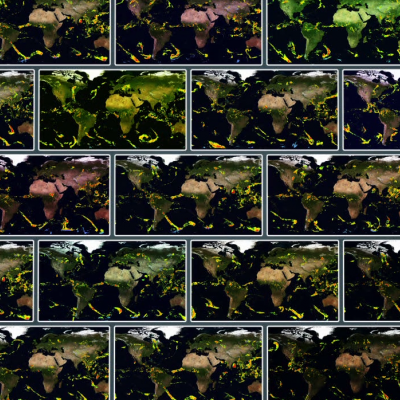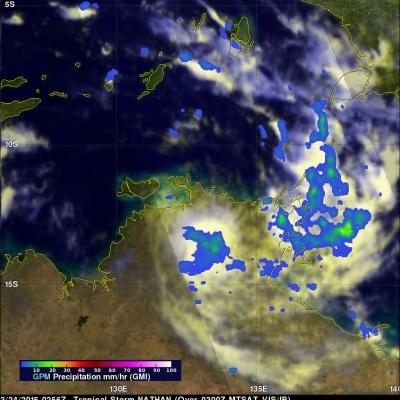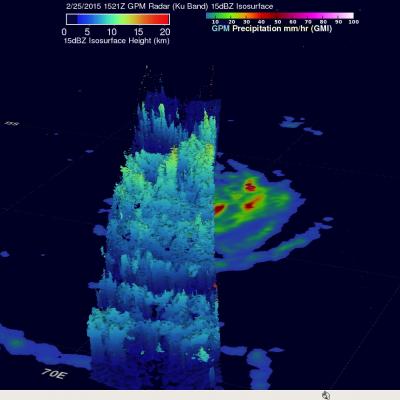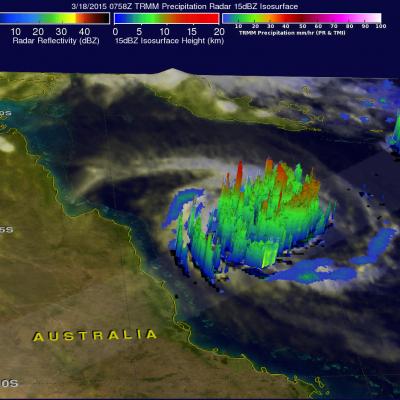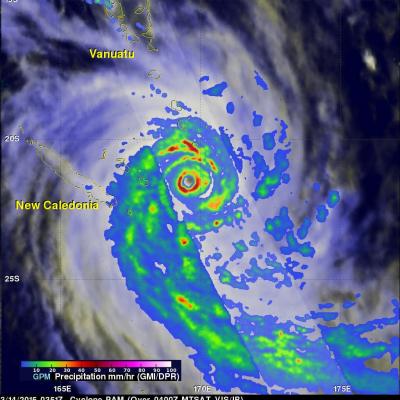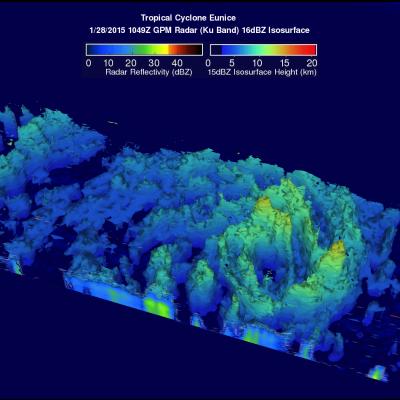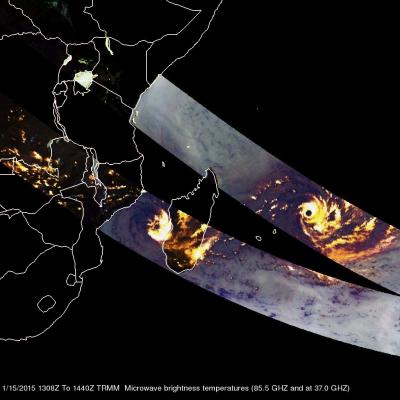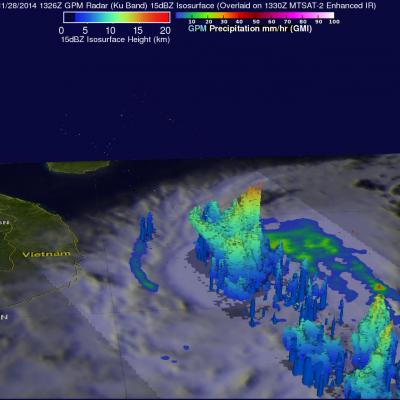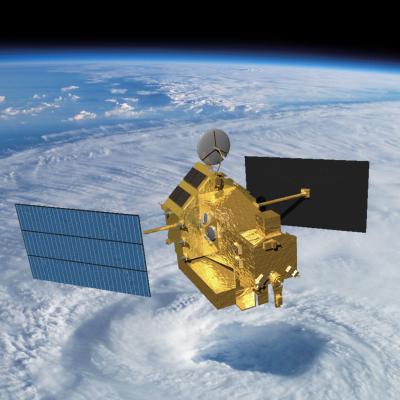Cyclone Ikola
The TRMM satellite's Microwave Imager (TMI) instrument collected data used in this rainfall analysis when the satellite flew over tropical storm Ikola in the South Indian Ocean on April 5, 2015 at 1722 UTC. TMI data revealed the location of rain falling at a rate of over 50 mm (amost 2 inches) per hour around Ikola's eye.



